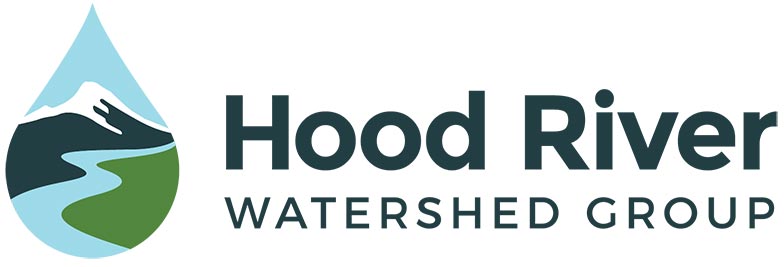Biennial Watershed Group Self Assessment
The Oregon Watershed Enhancement Board (OWEB) is a state agency that provides grants to help Oregonians take care of local streams, rivers, wetlands and natural areas. The Hood River Watershed Group receives significant funding from OWEB for organizational capacity and project-based work. Council Capacity grants help support the operating capacity of effective watershed councils like ours. As part of these Council Capacity grants, OWEB has a merit review process that encourages continuous improvement of watershed councils’ organizational management, operating structure, and the planning and implementation of on-the-ground watershed, restoration, and community engagement activities. The merit review process also ensures watershed councils are working toward strengthening their role in watersheds through activities focusing on organizational resilience, leadership, collaboration, and that the watershed council represents a balance of interested and affected persons within the watershed. All watershed councils that receive a Council Capacity grant are required to complete a biennial self-assessment in order to assess the organization and identify areas for improvement. This self-assessment was developed to help watershed councils identify strengths and challenges of their organizations, and establish capacity building goals.
We hope you’ll participate in this important evaluation process! The first step is to participate in an online survey. All Watershed Group staff, board members, and general members and stakeholders are encouraged to participate.
In the survey, you will be rating the Watershed Group on a variety of capacity elements:
1. Leadership: the capacity of organizational leaders to inspire, prioritize, make decisions, provide direction, and innovate.
2. Adaptive: the capacity of the Watershed Group to monitor, assess, and respond to internal and external changes.
3. Management: the capacity of the Watershed Group to ensure the effective and efficient use of organizational resources.
4. Operational: the capacity of the Watershed Group to implement key organizational and programmatic functions.
For each question in the survey, identify the description that best describes the Watershed Group’s status or level of performance. You are likely to discover that, for some questions, the Watershed Group’s capacity will not fully match any of the descriptions. In these instances, simply identify the description that is most suitable. It is better to underestimate rather than overestimate in a particular area.
At the Watershed Group meeting on February 28th, we will discuss the results, reach consensus on one set of ratings that best represents our organization, and prioritize areas of improvement for the next two years. Please take the survey by the end of the day on Friday, February 24th. The survey will take between 20-30 minutes to complete.

 DNA (eDNA) sampling for fish in streams is the collection of DNA released by a target species into the water. Scientists at the U.S. Forest Service’s National Genomics Center for Wildlife and Fish Conservation have pioneered developments in this field. Dan Mason, with the National Genomics Center, describes how and why eDNA for fish is collected, along with results from bull trout and Pacific lamprey data in the Hood River Watershed and beyond.
DNA (eDNA) sampling for fish in streams is the collection of DNA released by a target species into the water. Scientists at the U.S. Forest Service’s National Genomics Center for Wildlife and Fish Conservation have pioneered developments in this field. Dan Mason, with the National Genomics Center, describes how and why eDNA for fish is collected, along with results from bull trout and Pacific lamprey data in the Hood River Watershed and beyond. The
The 